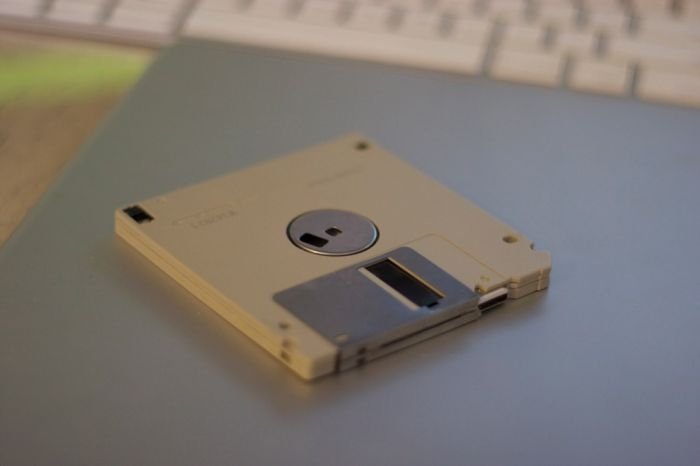|
|
DIY USB Floppy
|
The flexible magnetic disk, commonly called floppy disk, revolutionized computer disk storage for small systems and became ubiquitous in the 1980s and 1990s in their use with personal computers and home computers to distribute software, transfer data, and create backups.
Before hard disks became affordable, floppy disks were often also used to store a computer's operating system (OS), in addition to application software and data. Most home computers had a primary OS (and often BASIC) stored permanently in on-board ROM, with the option of loading a more advanced disk operating system from a floppy, whether it be a proprietary system, CP/M, or later, DOS.
By the early 1990s, the increasing size of software meant that many programs demanded multiple diskettes; a large package like Windows or Adobe Photoshop could use a dozen disks or more. By 1996, there were an estimated five billion floppy disks in use. Toward the end of the 1990s, distribution of larger packages therefore gradually switched to CD-ROM (or online distribution for smaller programs).
Mechanically incompatible higher-density formats were introduced (e.g. the Iomega Zip drive) and were briefly popular, but adoption was limited by the competition between proprietary formats, and the need to buy expensive drives for computers where the media would be used. In some cases, such as with the Zip drive, the failure in market penetration was exacerbated by the release of newer higher-capacity versions of the drive and media that were not backward compatible with the original drives, thus fragmenting the user base between new users and early adopters who were unwilling to pay for an upgrade so soon. A chicken or the egg scenario ensued, with consumers wary of making costly investments into unproven and rapidly changing technologies, with the result that none of the technologies were able to prove themselves and stabilize their market presence. Soon, inexpensive recordable CDs with even greater capacity, which were also compatible with an existing infrastructure of CD-ROM drives, made the new floppy technologies redundant. The last advantage of floppy disks, reusability, was countered by re-writable CDs. Later, advancements in flash-based devices and widespread adoption of the USB interface provided another alternative that, in turn, made even optical storage obsolete for some purposes.
|
|









